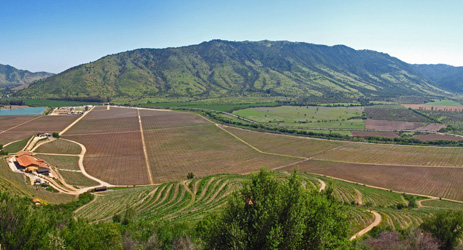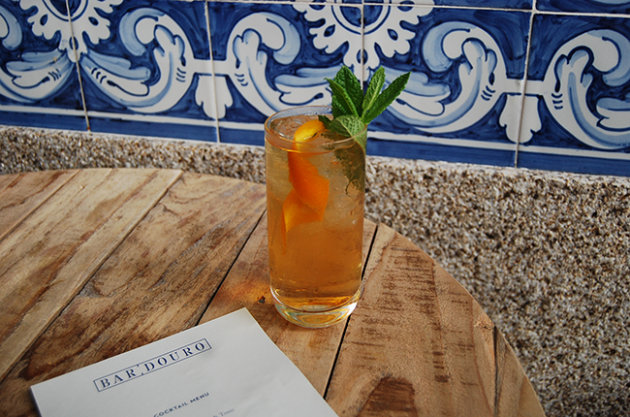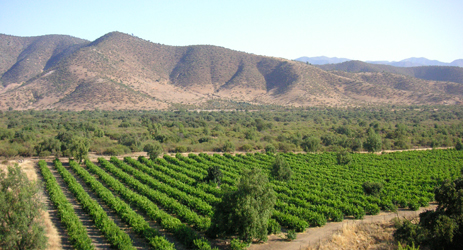Yesterday we covered two regions—Coquimbo (including Elqui and Limari) and Aconcagua (including Aconcagua, Casablanca and San Antonio), where many newly-established wine regions are situated. But historically most wines in Chile are produced in the Central Valley region.

and adapt under Creative Commons Attribution 3.0 Unported license
The most important sub-regions within Central Valley are (from north to south)
Maipo Valley
The capital of Chile, Santiago, is surrounded by the perhaps most well-known wine region in Chile — Maipo Valley, which is where the first commercial vineyards in the country were planted. Maipo is predominantly a red wine region, producing some of the finest Cabernet Sauvignon in Chile. Although it is not one of the largest wine regions, its proximity to the capital and the quality reds have made it a famous sub-region in the export market.
Rapel Valley
This sub-region includes two zones: Cachapoal Valley and Colchagua Valley, which are both famous for their exceptional full-flavoured red wines. Cachapoal Valley is known for producing elegant Cabernet Sauvignon and warm, fruity Carmenere. Colchagua Valley is also one of the most famous wine regions in Chile, especially known for its Cabernet Sauvignon, Carmenere, Syrah, and Malbec. Wineries in Colchagua Valley are mostly gathered in the centre of the valley, making Santa Cruz a hot spot for wine tourism.
Curico Valley
Cabernet Sauvignon and Sauvignon Blanc are the two most widely planted varieties in this region, making large quantities of table-standard wines.
Maule Valley
This is the largest wine region in Chile, historically known for producing bulk wines. In recent years, thanks to investments and exploration of new wine producing areas, the reputation of this region has been improved. Cabernet Sauvignon is the most widely planted variety.
Southern Region
Further south of the Central Valley lies the Southern Region of Chile. This region includes three important sub-regions: Itata, Bio Bio and the newly established Malbeco. The modest Pais is the dominant variety in Itata, producing wines in bulk to serve the domestic market. For Bio Bio Valley and Malleco Valley, although the viticulture conditions are challenging, with the help of modern technology, the winemakers there are producing excellent modern-style Riesling, Pinot Noir and Chardonnay.
Labelling
It is common to see ‘Reserva’ and ‘Gran Reserva’ on Chilean wine labels. However, unlike Spain, where these two terms are specifically associated with three and five years of oak-aging, in Chile they simply mean the wine is oak-aged for a longer period of time.
All rights reserved by Future plc. No part of this publication may be reproduced, distributed or transmitted in any form or by any means without the prior written permission of Decanter.
Only Official Media Partners (see About us) of DecanterChina.com may republish part of the content from the site without prior permission under strict Terms & Conditions. Contact china@decanter.com to learn about how to become an Official Media Partner of DecanterChina.com.



Comments
Submit